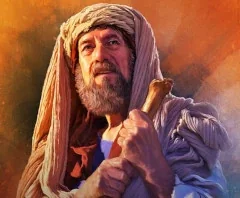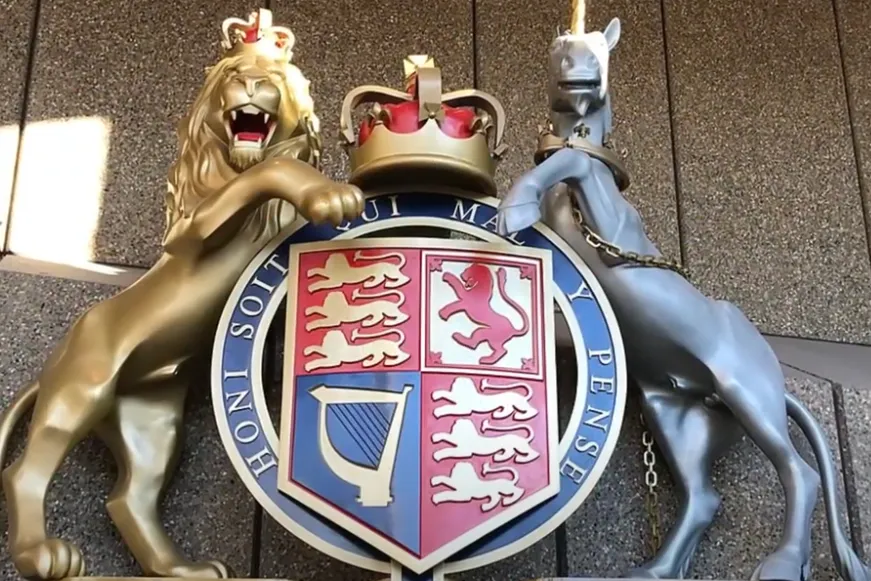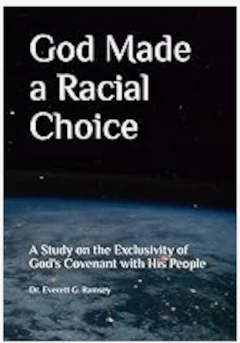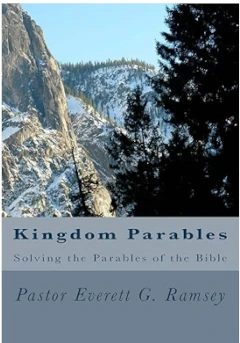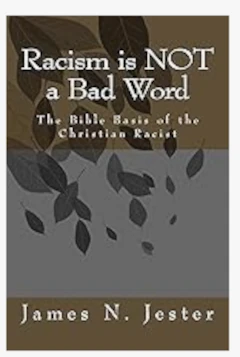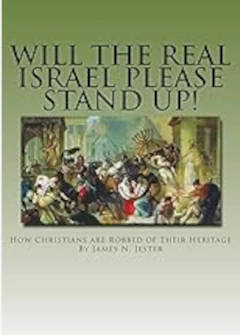Paul's Missionary Journeys - Part 5
SECOND MISSIONARY JOURNEY (Part Two)
Copied from the sermon notes of Pastor Don Elmore
May 4, 2025
Acts 16:13:
“And on the sabbath we went out of the city [Philippi] by a river [Gangites or also known as the Zygaktis] side, where prayer was wont to be made; and we sat down, and spake unto the women which resorted thither.”
Who are the “we” and who are the “women” that the missionaries spoke to? The “we” were Paul, Silas, Timothy and Luke and two of the “women” that they had a conversation with were Lydia and another damsel that was demon possessed.
We left our last sermon with Paul on his second missionary journey when he was about half-way through his trip. He was at Phillippi in Macedonia (modern-day Greece). Before we begin telling you what happened on their missionary journey at Phillippi, let me first tell you a little bit about the city of Phillippi.
Julius Caesar was assassinated on a plan by about 60 Roman senators, led by Brutus and Cassius, who stabbed him to death, on the “Ides of March”, (March 15, 44 B.C.). Caesar’s death resulted in a long series of civil wars that ended in the death of the Roman Republic and the birth of the Roman Empire.
The murder of Julius Caesar
Julius Caesar was immensely popular with the people of Rome. He was a successful military leader who expanded the republic to include parts of what are now Spain, France, Germany, Switzerland, and Belgium. Caesar was also a popular author who wrote about his travels, theories, and political views.
Many members of the Senate, a group of appointed (not elected) political leaders, resented Caesar’s popularity and arrogance. After Caesar attained the status of dictator for life in 44 B.C., these officials decided to strike the ultimate blow against his power.
The death of Julius Caesar ultimately had the opposite impact of what his assassins had hoped. Much of the Roman public hated the senators for the assassination, and a series of civil wars ensued. The city of Phillippi was where the decisive battle ended the Roman Republic and established the Roman Empire (42 B.C.).
In the end, Caesar’s grandnephew and adopted son, Octavian emerged as Rome’s leader. He renamed himself Augustus Caesar and began the Roman Empire. Our added month, “July” is named after Julius, and the month of “August” is named after Augustus.
Phillippi was a chief city in the Roman Empire at the time the apostle Paul arrived. The city was originally founded in 360 B.C. After only four years, the city was conquered by King Phillip II of Macedon, father of Alexander the Great, who renamed the city after his father; PHILLIPPI.
Phillip enlarged and fortified the city. The city of Phillippi was conquered by the Romans around 170 B.C. The city attained major importance, and projects were constructed and expanded in various phases. The remains of its churches are exceptional testimony to the early establishment and growth of Christianity.
Previously, Paul and Silas had gone to Tarsus, then to Derbe and Lystra, where he met Timothy and asked him to join them. Then they went to Iconium, Antioch, Mysia, and Troas, where the ancient city of Troy was located (four miles away from Troas) and where Luke joined them.
Shortly before they got there, they had been in a quandary of where to go next. After they had gone through Phrygia and Galatia, they were forbidden by the Holy Spirit to preach the word in the provinces of Asia and Bithynia.
To solve the problem of where to go next, a vision appeared to Paul in his sleep. In his vision he saw a man of Macedonia (modern-day northern Greece) exhorting him to come there. Immediately they left Troas and went quickly to Samothracia, Neapolis and Phillippi. After being there for several days, they went to the riverside (Acts 16:6-13).
It was at the Gangites River in Phillippi, that Luke writes about an event that he deemed important for us to know about. It was here, where prayer was regularly made, and there many women went. It was at one of the many spacious, uncovered amphitheaters in the area that the four missionaries had conversations with some of the women as mentioned in our opening verse.
One of the women that they talked to was named Lydia. She was a seller of purple, who came from the city of Thyatira (one of the seven churches of Revelation) in the province of Asia in Asia Minor. Some women were famous for the manufacture of beautiful purple made from the murex, a small shellfish. Murex purple was used in Greek and Roman times for dyeing togas. The mollusks secrete a yellowish liquid that oxidizes to a purplish red in bright sunlight.
Lydia became a believer. She believed what Paul and the other missionaries preached and she and her household were baptized. As a result of their new friendship, she invited the missionary troupe to stay at her house. Lydia’s story is important because it demonstrates one of the reasons that Christianity spread. Her conversion marks a pivotal moment in the expansion of the early church. Lydia is often remembered as a symbol of faithful Christian discipleship and is revered for her role in supporting the early Christian community through her resources and hospitality.
A little while later, as the four missionaries were going to prayer, they met another woman who brought her masters much gain by soothsaying. Or should I say that another woman met them. For this demon-possessed woman followed the footsteps of Paul and his fellow ministers day after day consistently crying out that they were “servants of the most high God, which shew unto us the way of salvation” (Acts 16:17).]
This damsel, according to local beliefs, had fortune telling skills that were derived from the ancient battle between Apollo and the dragon-serpent Python. According to Greek mythology, Python was depicted as a monstrous dragon-serpent who had an oracle on Mt. Parnassus, famous for predicting future events.
A communication of divine knowledge from god to mortal, also known as divination, played a major role in ancient Greek religion. The most important form of divination was the practice of consultation of a god through an intermediary. This intermediary was known as an oracle.
Although there were permanent sites and sanctuaries of different gods scattered across ancient Greece, the most renowned and enduring of them all was the oracles of Apollo at Delphi. Delphi is located on a rocky ridge beneath Mount Parnassus. It is a place belonging to the gods. Gaia, the mother goddess of Earth, was the first inhabitant, long before Apollo. By the 5th century BC, the oracle of Delphi had become the most well-known sacred site in Greece.
The oracle was only available for consultation on one day of each month. For three months of the year, during winter, there were no consultations. It was believed that this was because Apollo sought a warmer climate during the colder months. Consultation was, therefore, only possible for nine days of the year.
Even on these nine days, a further process took place to determine if Apollo was happy to be consulted. Cold water was sprinkled on a sacrificial goat. If the goat shuddered, then Apollo had given his consent, and the day could proceed as planned.
On each consultation day, there was a line of people who wanted to be addressed to the oracle. They each had to purify themselves in spring water near the sanctuary. People from the city of Delphi went first, followed by people who came from cities that defended the oracle at Delphi, followed by all other Greeks. Non-Greeks were admitted last.
Each consultant had to pay money and offer a type of sacrificial cake, before the consultation. A further sacrifice was burned as an offering to all the gods and to the people of Delphi. It was then time for the consultant to meet the priestess of Apollo, otherwise known as the Pythia and oracle of Delphi.
Little is known about the Pythia but we do know that all Pythias had to be Delphian women from respected families. Once chosen they would serve for life. By the 4th century BC, the Pythia lived permanently in a house at the sanctuary. On consultation days, she would bathe in the Spring near the sanctuary. She would then proceed to the temple and burn a sacrifice to Apollo of laurel leaves and barley meal.
The consensus is that the Pythia received consultants while sitting on a tripod in an inner part of the temple. Later ancient sources mentioned a chasm on the floor of the temple. From this opening, some sort of vapor apparently rose up and was inhaled by the Pythia. She then entered a type of trance and uttered forth the divine words of Apollo.
Consultants visited Delphi with requests as individuals and on behalf of entire city-states. The most common requests for help from individuals involve personal questions, such as those regarding marriage and job prospects. Sometimes they wanted to know if they should embark on a long and dangerous journey. Requests for remedies for disease and illness were also common. This site attracted visitors from across the Greek world and beyond, from places such as Asia Minor and Egypt.
Reconstruction of the Sanctuary of Apollo at Delphi
Delphi was considered as being the center of the world. According to ancient myth, Zeus released two eagles, one from the east, and the other from the west, and caused them to fly toward the center. They met at the site of Delphi, and the spot was marked by a stone called the omphalos (navel), which was later housed in the Temple of Apollo. The oracle at Delphi originally belonged to Gaea, the Earth goddess, and was guarded by her child Python, the serpent.
When the god, Zeus, had an affair with Leto, Zeus’ wife, Hera, sent Python to persecute Leto during her pregnancy and the birth of the twins, Apollo and Artemis (Diana). Apollo, after growing up, avenged his mother and sister by slaying Python. Apollo slew this serpent with bow and arrows. Apollo was particularly revered in the island of Crete as Apollo Delphinius, thought to have appeared to priests as a dolphin and carried them to Delphi, the location of his famous oracle.
Priestess of Delphi
From the book, Knowing God and His Christ, page 97, by R. D. Sylvester, says that Roman and Greek mythology follows relatively close to what the story in Genesis tells us:
“Are the Greek myths drawing upon Bible stories from their distant past, before the captivity of Israel into Assyria and subsequent dispersion into the west? Are they deifying mortals from the Bible as they deified their mortal heroes as the Romans deified their Emperors?”
Apollo shooting arrows to kill Python.
To commemorate Apollo’s victory, he established the Pythian Games (precursor to the Olympic games), held every four years. The priestess of the oracle was known as the Pythia, a name derived from Python.
So, this demon-possessed fortune teller woman in Phillippi was part of this system of the Delphi religion. She constantly followed the disciples and cried out saying that “…these men are the servants of the most high God, which shew unto us the way of salvation” (Acts 16:17). While every word that this evil woman said was true, the purpose was to discredit the message of the apostles by making the people think that they were in league with demon spirits. This fortune teller cried out for many days. Paul finally had enough of it and commanded that the demon come out of her. The demon came out within an hour, and the shouts by the woman with the demon spirit stopped.
Who were these demon spirits? I believe that they are the disembodied spirits of the Nephilim who, like many of the Roman and Greek gods, were the offspring of a god (fallen angel) and a mortal woman. These Nephilim, (half rebellious angel and half mankind) became heroes and men of renown. Since they had no body after they died, they were homeless and needed to possess a body.
This was what Paul cast out of the fortune-telling woman. But this made the masters of this former demon-possessed woman very angry, because they saw their profits suddenly disappear. Because of this, they caught Paul and Silas and took them to the marketplace unto the rulers. They charged that these Israelite Judeans were teaching customs which the citizens of Phillippi were not able to observe. And when the multitude revolted against the missionaries, the magistrates commanded that they were to be beaten.
Paul and Silas were beaten with many stripes and thrown into the dungeon in the prison. The jailer was charged to keep them safe, or he would forfeit his life.
They had been:
- Lied about,
- Falsely accused,
- Treated like they were not Roman citizens,
- Beaten with many stripes,
- Put in the dungeon,
- Their feet were held securely in stocks.
It was midnight. They were in pain from the beating that they took and the fact that their feet were in the stocks, which caused them much leg pain…but they overcame their agony and…
- Prayed out loud to Almighty God, and
- Sang praises to Him.
The prisoners heard their prayers that they made to God and their joyful singing, as it is recorded in Acts 16:25. Paul and Silas made no complaints. They made no cry of “Why is it me?” They just prayed out loud and sang praises unto the LORD God of Israel. Then what happened?
Suddenly, there was a great earthquake. Coincidence? The prison was shaken, the doors were opened, and everyone’s feet were loose from the stocks (Acts 16:26). It was a very unusual earthquake that night, because it freed all the prisoners’ feet from shackles and opened all the prison doors that had been closed very tightly.
The jailer was awakened by this mighty force of nature. He immediately saw all the prison doors open and supposed that a lot, if not all, of the prisoners, had fled. He was responsible for all the captives in his part of the prison, and, if any had escaped, he would be sentenced to death. Because of this fact, the keeper of the prison took out his sword and was preparing to commit suicide…when suddenly, he heard Paul cry out with a loud voice…
Acts 16:28b:
28) “…Do thyself no harm: for we [Paul and Silas] are all here.”
The jailor called for a light, and trembling went into the cell that Paul and Silas were in and saw them. He then fell before them and asked what he must do. Paul and Silas then spoke to him the word of the LORD. Then the jailor and the people in his house washed Paul’s and Silas’ stripes, and then they were baptized. (It was after midnight, where and how were they baptized? The Bible doesn’t tell us). Then after they went to the jailer’s house, they all ate a meal together and rejoiced, believing in the LORD God of Israel (Acts 16:34).
When the next day came, the magistrates sent representatives to Paul and Silas telling them that they could leave jail as free men. The magistrates, no doubt, were fearful of the earthquake that occurred that night and were anxious to have Paul and Silas leave before the mob made another attempt on their lives.
But Paul told them that they, i.e. the magistrates, had broken the rules of Rome because they had permitted them to be beaten openly and put in prison with no trial. The Rules of Rome indicated that any citizen had to be found guilty first before they were beaten. But they didn’t have any trial, they just were beaten and thrown in the dungeon. So, now the guilty party wanted the unjustly treated Roman citizens to leave privately and secretly? If Paul sent words about what happened to Rome, the lives of the magistrates would be over.
“No,” was Paul’s answer. Let the magistrates come and fetch them out of prison in person. So, as a result, the magistrates came fearfully the next morning and set them free and desired that the missionaries would leave their city.
Paul and Silas departed from prison and went into the house of one of the women they had met previously at the riverside, Lydia. After a time of fellowship, they soon departed Phillippi to the next cities on their journey.
THE JOURNEY TO THESSALONICA, BEREA, AND ATHENS
The missionaries then passed through Apollonia and Amphipolis; then they came to Thessalonica. Here is where trouble happened once more. After preaching at the synagogue for three sabbath days, a few of the Israelite Judeans and many of the dispersed Israelites believed, including many women.
But the Edomite Jews of the synagogue of Thessalonica were envious and did not believe the words that Paul and Silas spoke. So, the Jews of the city took “lewd fellows of the baser sort” with them and set Thessalonica in an uproar and assaulted the house of Jason where Paul, Silas, Timothy, and Luke were staying. But they didn’t find the disciples, because they were not there at that time. But they took Jason and certain brethren and accused them of receiving missionaries who were “turning the world upside down” (Acts 17:6b). But when the rulers had taken a substantial bail from the captives, they let them go.
When Paul’s brethren heard what had happened, they immediately sent the apostles Paul and Silas from Thessalonicaby night to Berea. The people of Berea were more noble than those in Thessalonica because they received the word with all readiness of mind and searched the Scriptures daily. As a result, many of the Israelite men and women of that city believed.
But when the Jews of Thessalonica (onceagain) had knowledge that the word of God was preached by Paul at Berea, they came and stirred up the people of Berea. Immediately the brethren sent Paul away by ship, but Silas and Timothy stayed in Berea.
Paul ended his voyage to Athens while Silas and Timothy were to join him as fast as possible (Acts 17:10-15). It’s about 275 miles from Berea to Athens. That would be like walking or riding on a mule from the church to:
Pittsburgh, Pennsylvania to the Northeast,
Asheville, North Carolina, to the southeast,
Chicago, Illinois, to the northwest,
Chattanooga, Tennessee, to the south, or
St. Louis, to the west.
It would take a little bit of time to get there.
While Paul waited for his fellow missionaries to join him, his spirit was stirred when he saw the inhabitants of Athens wholly given to idolatry. Therefore, he began disputing in the synagogues with the Jews and in the marketplace with certain philosophers, the Epicureans, and the Stoicks.
The Epicureans believed that happiness comes from moderation, simplicity, friendship, and community. In simple terms, it is an approach to life that stresses finding happiness through living simply. Stoicks believed that the practice of virtue is enough to achieve a well-lived life. The Stoics identified the path to achieving it with a life spent practicing the four cardinal virtues in everyday life:
- Prudence,
- Fortitude,
- Temperance, and
- Justice,
as well as living in accordance with nature. Both the Epicureans and Stoicks denied the recent resurrection and the future judgment.
The men of Athens, after conversing with Paul for a while, decided to take him to Areopagus or Mars’ hill to hear more of his “new doctrine” that he was teaching (Acts 17:19). Paul was alone at this time as he was still waiting for the missionaries to join him from Berea.
Mars’ hill was located on the upper left (not shown) in the above picture.
Mars’ hill was where the great council of the Athenians was held. It was the most sacred and reputable court in the Greek world. The legend is that Mars was tried there by a court of twelve gods for the murder of Halirrhothius, son of Neptune, but was acquitted (Acts 17:16-25).
It was at this meeting at Mars’ hill that Paul made the statement in his sermon (only ten verses long in the Bible) to the men of Athens, that has become famous. This one sentence is used by Judeo-Christianity, to teach that all the different races of the world have Adam as their father and Eve as their mother. They then conclude that all races are therefore brothers.
Acts 17:26:
26) “And hath made of one blood all nations of men for to dwell on all the face of the earth, and hath determined the times before appointed, and the bounds of their habitation” (KJV).
Out of 45 Bible translations, only 13 had the word “blood” in them. The rest of the translations translate this verse as being like the following, “And He made from one [man; Adam] every nation of mankind [Adamites] to live on all the face of the earth, having determined allotted periods and the boundaries of their [Adamites] dwelling place.”
The Judeo-Christians, as well of most of Christendom, state that all the nations of mankind who dwell on the face of the earth(meaning to them, all the nations dwelling in the entire world) come from one man, i.e. Adam and his wife Eve. Thus, they conclude that all the people in the world are equal, since they all originated from the same couple. Because of this, they then say that there are not many races, there is just one race, i.e., the human race. So, there is no such thing, in their mind, as interracial marriages. They fail to mention that it was against federal law in the United States for 200 years until the Supreme Court ruled against the miscegenation law in 1967.
WHY IS INTERRACIAL MARRIAGE UNACCEPTABLE?
Why do we believe that most of Christendom is wrong. The truth is that all humans of the earth are not called “men” in the Bible. Many were on the earth before Adam was formed, therefore it is impossible for them to be descendants of Adam and Eve.
There are a host of books, like Answers in Genesis’, “One Race, One Blood,” that make this one verse (Acts 17:26) the bedrock of their theology. Answers in Genesis, which believes that nothing on earth is older than 6,000 years old, also teaches that there is no marriage between races that can’t be approved by God as long as both parties are “Christian.” Interracial marriage is not a problem for them since they say that all races come from the same source and are of the same race. Quoting from the previously mentioned book, “One Race, One Blood”:
“Today, depending on the country, marriages between different people groups [races] often result in persecution for the parents and the children. Current attempts at bloody ‘ethnic cleansing’ are the result of hatred of one particular people group [race] toward another. Even within segments of the Church, intense prejudice can be seen toward those whose skin is of a different shade.”
But is Answers in Genesis correct when they say that both the bride and groom need only to be Christians for God to approve their marriage? Why is that wrong? One reason is that there are major differences in who is a Christian. There are many Christian Churches which teach the opposite of what other Christian Churches teach (there are over 45,000 different Christian denominations globally).
For example, would these marriages between these “two Christians” be approved by Almighty God according to Answers in Genesis?
- Can a person whose church’s theology is Calvinistic (God is sovereign in whom He saves) marry a person whose church’s theology is Arminianism (man must choose his own salvation)?
- Can a person from a 501C3 church marry a person from a church which has no attachment to the state?
- Can a person whose church believes that LGBTQ is acceptable marry a person from a church that believes that this behavior is a reproduction of the sins of Sodom and Gomorrah?
- Can a person whose church believes that salvation is available to everyone who is living on the earth marry a person whose church believes that salvation was given to God’s people exclusively?
- Can a person whose church believes that their members can marry a person of any race marry a Christian who believes that marriage is valid only between people of the same race?
- Can a person whose liberal “Christian” church allowed him/her to be promiscuous marry a person from another church which taught he/her that a man/woman could have no sex until he/she was married?
- Can a person from a Protestant church marry a person whose church believes that the Pope is the head of the original only true “Christian” church and is the successor to the long line of popes from the first one – Pope Peter?
- Can a Protestant, who denies the validity of the Mass, marry a Roman Catholic who says that the Mass is the eating and drinking of the actual body and blood of Jesus Christ?
- Can a person whose church believes that Jesus Christ and Satan are brothers marry a person who is from a church that believes that Jesus Christ is eternal while Satan is created?
- Can a person whose church believes that they are waiting for the rapture of the church marry a person whose church believes that there is no such thing as a future rapture of the saints.
- Can a person whose church believes that there were humans on the earth before Adam was created marry a person whose church believes that Adam was the father of all races?
- Can a person whose church believes that they are members of a restoration church marry a person from a church that needed no restoration?
- Can a person who was a Southern Baptist marry a person who was Roman Catholic in the late 1800s? My grandmother and grandfather did, and the Catholic church would not accept the marriage as being valid.
- Can a person whose church is Presbyterian marry a person who is a “Christian” Canaanite Messianic from a megachurch?
If they can, what changed. For when God forbade Israel, His covenant people, to marry the Canaanites (Deuteronomy 7:3; Judges 3:5, 6; Ezra 9 & 10, etc.), Answers in Genesis says, that it was not because of their race that they were forbidden to marry them, it was because the Canaanites were all unbelievers.
Well, that was half-true. But they failed to mention that there were no Canaanites who could ever be believers. That was one of the reasons that God instructed His people to commit genocide against the Canaanites.
Jesus demonstrated the truth of this, when He gave His answer to the Edomite/Canaanites (Jews) question (John 10:24).
John 10:26:
26) “But ye (Edomite/Canaanite Jews) believe not, because ye (Edomite/Canaanite Jews) are not of My sheep, as I said unto you (Edomite/Canaanite Jews).
And what was the reaction of these Edomite/Canaanite Jews?
John 10:31:
31) “And the Jews took up stones again to stone Him [Christ].”
And if an Israelite married any Kenite/Canaanite/Edomite Jew, their offspring could never be a believer either because that child would be a mongrel. The Bible teaches that it is only the Israelites who have kept their seed pure, are the recipients of the promises of the Abrahamic Covenant.
Then Answers in Genesis has the following display in their book, One Race, One Blood, in Chapter six: One Flesh, and they also have the same photo displayed in one of the rooms of their Creation Museum.
They ask the question: Which impending marriage does God counsel against? They give three choices. A. I. G. answers that God counsels against marriage #3, a white couple because one is a non-Christian and the other is a Christian. On the other hand, they say that God approves marriage #1 because, even though the two are of different races, no, they believe that there is only one race, the marriage is acceptable because both are Christian, and they believe they are members of the same race.
We believe that the Bible teaches marriages #1 and #2 are invalid marriages, because they would be interracial. Marriage #3 would also probably not be a good marriage either, depending on the definition of what a true Christian is. We do not believe that there is only one race, i.e., the human race. God’s people are a special creation and are different from all the other races.
Then Answers in Genesis as well as most of Christendom, teaches another strange phenomenon that they believe backs up their interracial marriage belief:
“It was my [Ken Ham’s] first-year teaching science in a public school. As a Christian, I also taught students the history of mankind based on God’s Word. After I had explained how the event of the Tower of Babel resulted in the human population being split up into groups that moved away from each other, developing different people groups [races], I explained that all humans were related to each other—all one family.”
Answers in Genesis teaches that all nations of the world were at the Tower of Babel about 4200 years ago. But do they, or their followers, ever think that they are teaching that the rest of the earth was barren of any individuals?!
This means that there were no and had been no Orientals, Negros, Indians, Aborigines, Eskimos, Mayans, Pacific Islanders, etc. in the world at this time or before the scattering at the Tower of Babel. No one was living in Africa, Asia, Europe, North, Central, or South America, Australia, New Zealand, etc. There was only one race on the earth, and they were all living at the Tower of Babel, in modern-day Iraq. Is there any history book that teaches this?
The Bible reference that Answers in Genesis is referring to in the article I just quoted is the story of the Tower of Babel. It occurred about one hundred years after the flood of Noah. And it is the next biblical event that Answers in Genesis is going tobuild in their attractions in Kentucky, as they have the:
(1) Creation Museum,
(2) Noah’s Ark, and they are now building the
(3) Tower of Babel.
But the Bible says that the people at the Tower of Babel were the descendants of the three sons of Noah (Ham, Shem and Japheth). A. I. G. agrees with this statement. But here is where the major disagreement comes in.
MAJOR DISAGREEMENT
Answers in Genesis, along with most of Christendom, believe in a worldwide flood that reduced the earth’s population to eight people of the same race. They believe that the three sons of Noah were the only ones left to repopulate the world. They believe that all the descendants of Cain, plus the rest of the world, drowned in Noah’s worldwide flood. Therefore, if A. I. G. and the others are correct about this, they are correct about there was only one race that was scattered at the Tower of Babel.
They believe that everyone on the earth, beginning with just eight people, was living in modern-day Iraq and were all speaking the same language. After one hundred years, God split this one race of brown people by changing their languages, so they migrated to different parts of the earth according to their newly acquired language. Then, how do we get the different races that we now have if there was only one race after the flood of Noah?
I will discuss this very important question in my next sermon (part 6).
To be continued.
Blessed be the LORD God of Israel.

